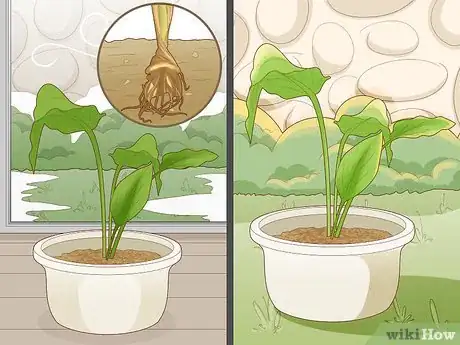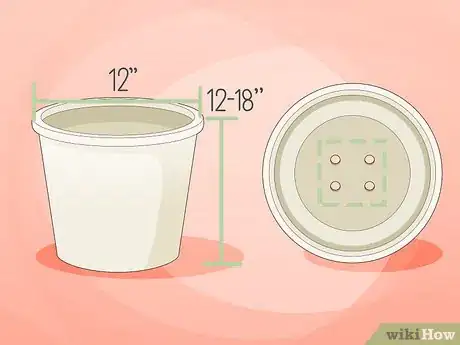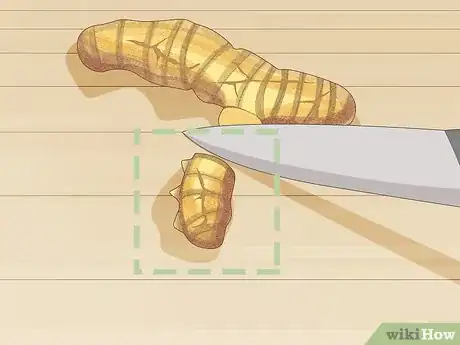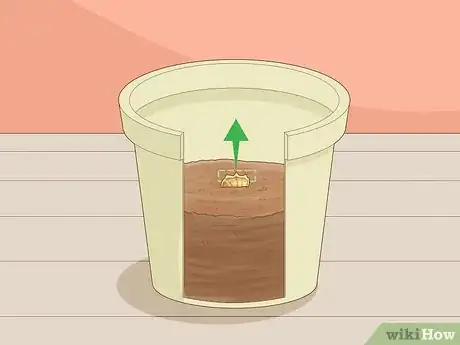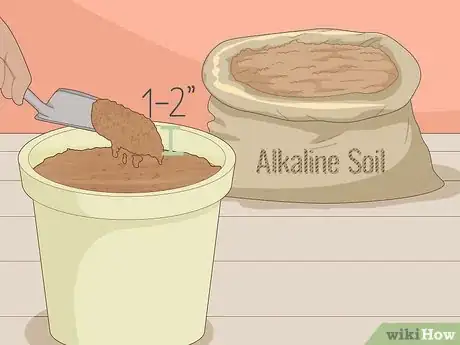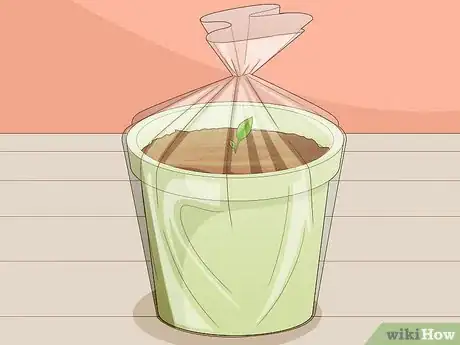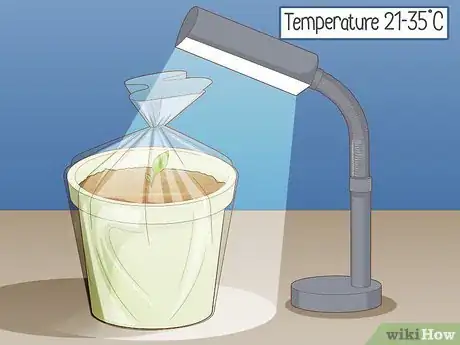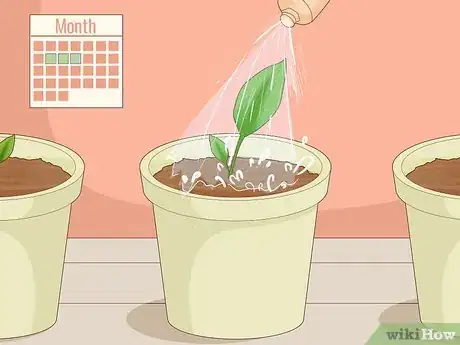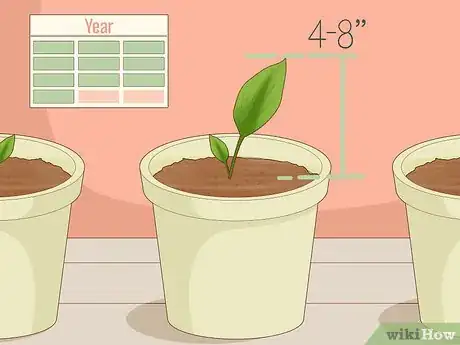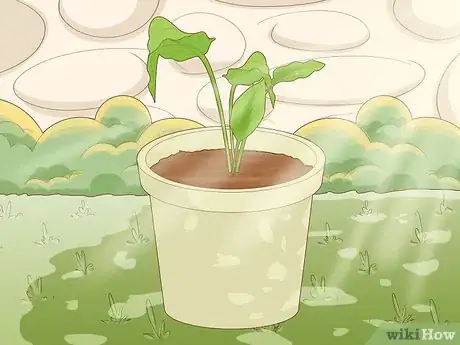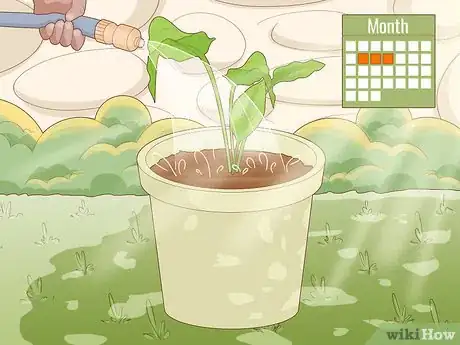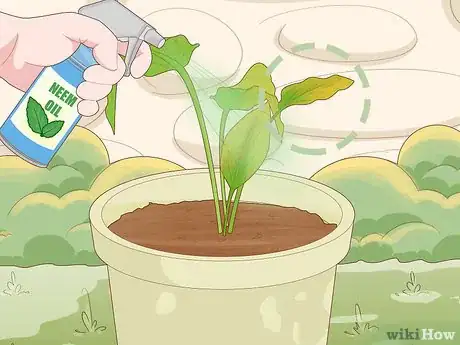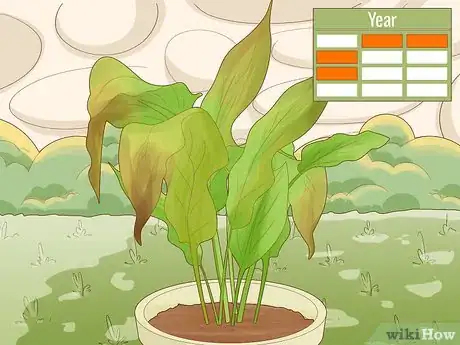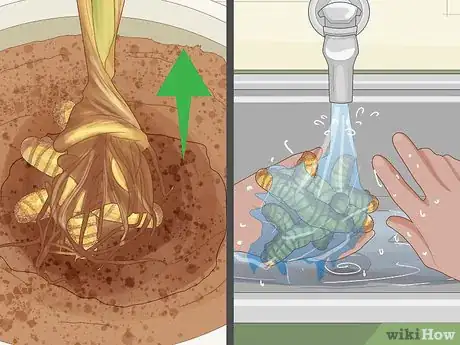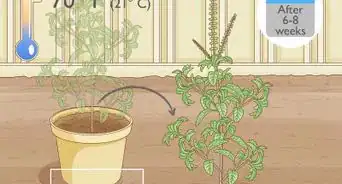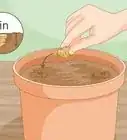This article was co-authored by wikiHow staff writer, Eric McClure. Eric McClure is an editing fellow at wikiHow where he has been editing, researching, and creating content since 2019. A former educator and poet, his work has appeared in Carcinogenic Poetry, Shot Glass Journal, Prairie Margins, and The Rusty Nail. His digital chapbook, The Internet, was also published in TL;DR Magazine. He was the winner of the Paul Carroll award for outstanding achievement in creative writing in 2014, and he was a featured reader at the Poetry Foundation’s Open Door Reading Series in 2015. Eric holds a BA in English from the University of Illinois at Chicago, and an MEd in secondary education from DePaul University.
There are 7 references cited in this article, which can be found at the bottom of the page.
wikiHow marks an article as reader-approved once it receives enough positive feedback. In this case, 89% of readers who voted found the article helpful, earning it our reader-approved status.
This article has been viewed 108,191 times.
Learn more...
Turmeric is a plant that can be harvested to make turmeric powder—a spice which has a strong, bitter flavor that is reminiscent of ginger. To grow it, you’ll need to plant a turmeric rhizome, which is an immature length of turmeric root. Growing turmeric is easy as long as you can consistently monitor and water your rhizome. This shouldn’t be too tall of an order since most of the growing process can take place indoors and doesn’t require sunlight. To grow turmeric, buy some turmeric rhizomes, plant them in smaller pots or planters, and then transfer them outside after 6-10 months before harvesting them.
Steps
Preparing Rhizomes for Planting
-
1Plant your turmeric indoors in the late winter. Turmeric takes a long time to sprout, but luckily, it can be done indoors during the winter. It also won’t require light until it begins to sprout, so you don’t need to worry about taking up a big space near a window for the 5-6 months required to sprout the stalks.[1]
- If you live in a warmer climate and want to plant your turmeric outside, you can plant the rhizomes in your garden. Do it in the winter after the last frost passes so that they sprout in the summer months. You can’t do this if it gets colder than 50 °F (10 °C) outside in winter though.
- If you’re planting turmeric outside, do it in a greenhouse with a planter’s box if you can. Turmeric requires a lot of space for the roots and needs a lot of humidity to grow early on.
-
2Purchase some turmeric rhizomes from a market or health food store. To grow turmeric, you need to purchase turmeric rhizomes. They look sort of like ginger root, and can be found in most grocery or health food stores. Look for rhizomes with a lot of little bumps on the round portion sticking out of the root. These are called buds, and the number of buds on a rhizome will determine how big the plant gets.[2]
- If you can’t find rhizomes at a store in your area, you can purchase them online.
Tip: If you can’t find turmeric rhizomes at your local store, look for them at an Asian or Indian grocery shop. Turmeric is a popular ingredient in a lot of Asian and Indian dishes.
Advertisement -
3Get pots that are at least 12 inches (30 cm) deep and 12–18 inches (30–46 cm) wide. Once you plant your rhizomes, they’ll need plenty of space in the pot to grow. Turmeric can grow up to 3.5 feet (1.1 m) tall, so choose a pot that will be big enough to support it as it grows. Ceramic or plastic pots or planters are perfectly fine for turmeric.[3]
- Use a planter or pot with good drainage at the bottom.
- You can use planters instead of pots if they have the same dimensions.
- If you’re planting your turmeric outside, consider using a planter’s box to ensure that the rhizome has enough space underneath it to grow. A simple box with a depth of 1–2 feet (0.30–0.61 m) should be more than enough.
-
4Cut the stem off of the rhizome if it came with one. Depending on the brand and style of rhizome that you purchased, the rhizomes may still be attached to the stem. The stem looks like a bulky chunk of dried garlic, and may have small hair-like branches sticking off of it. You can remove the rhizomes by pulling them off if they’re dried out. Otherwise, use a knife to cut the stem off of your rhizomes.[4]
- You can cut your rhizome into smaller sections if you have smaller pots or planters.
-
5Cut your rhizomes into 2–6 in (5.1–15.2 cm) pieces so that each piece has 2-3 buds. Inspect a length of rhizome and count how many buds there are. The buds are the small bumps that extend out of the body of the rhizome. Cut sections of rhizome into smaller pieces so that each chunk has 2-3 buds on it.[5]
Planting Your Rhizomes
-
1Fill each planter or pot with 3–6 inches (7.6–15.2 cm) of potting soil. Look at the label on a bag of soil to find a slightly alkaline soil with a pH between 6-8. Pour your soil into the pot so that the bottom third of your container is filled. You do not need to pat the soil down, but you can shift it around with your hands so that it’s flat if you’d like to.[6]
- pH refers to the acidity level in soil. Turmeric grows best in soil that is slightly acidic.
-
2Lay a section of rhizome flat on top of the soil with the buds facing up. Place a rhizome in the center of the soil. Rotate the rhizome so that the majority of the buds are facing up towards the opening of the pot. If the buds are on random sides of the rhizome, rotate it so that the majority of the buds are pointing towards the opening of the pot, even if they’re at an angle.[7]
- The stalks of your turmeric plant are going to grow out of the buds, so as long as most of them are facing the opening of the pot, they’re likely to grow in the direction of the opening.
- Don’t worry about a stalk growing out the bottom of your pot or planter. It will just die off when it can’t get any sunlight after it grows.
-
3Cover the rhizome with potting soil, leaving 1–2 in (2.5–5.1 cm) at the top. Fill the rest of your pot or planter with your potting soil. Tilt the open bag of your soil over the top of your pot or planter and tip it downward to pour the soil. Cover each section of the pot or planter equally until you have a little bit of room at the top.
- Some ancient Asian or Indian methods of turmeric harvesting involve covering the rhizome in manure, fertilizer, or compost. This is not generally recommended for health reasons.
-
4Water your pots or planters thoroughly until the soil is visibly wet. Fill a water sprout or large cup with tap water and pour it liberally across the surface of your pot or planter until you’ve gotten each section of the soil wet. Water until the soil is visibly moist. Do this slowly to avoid drowning your rhizome.[8]
- Make sure that there is a base for your pot or planter if it has drainage holes at the bottom to avoid making a mess.
-
5Slip your pots or planters into clear plastic bags. Get planter bags or large plastic trash bags and slip your pots inside. Set each pot at the base of an individual bag and fold it over at the top so that the opening is restricted a little bit. Place your turmeric in the area that you plan on storing it.[9]
- If you’re planting your turmeric in a garden, plant them in a greenhouse if you can. If you can’t, consider making a miniature greenhouse for your plants.
- Your turmeric may still grow without a plastic bag or greenhouse, but keeping the plant humid is essential to making it sprout. If you can’t store it in a greenhouse or bag, mist your turmeric every day with a spray bottle filled with water.
- You don’t need to seal the bag. In fact, you want a little air flow to promote growth.
-
6Store your pots or planters in a warm place. Turmeric rhizomes grow when the temperature is 70–95 °F (21–35 °C). If the temperature drops below 50 °F (10 °C), your plant may die before it has had a chance to sprout.[10]
- If you don’t have a warm place to store your turmeric, use a heating pad or desk lamp to keep it warm.
- If you don’t want to keep your turmeric artificially warm and you don’t have an appropriate place to store it, put it in a large plastic cooler in a temperate section of your home.
- It doesn’t matter if your plants are exposed to light at this stage in the growing process.
-
7Water your turmeric every 2-3 days to keep the soil damp. Your rhizomes are going to need to be watered regularly, especially if you live in a warmer climate where the water is likely to evaporate very quickly. Check on your turmeric once every couple of days to see if the soil is damp. If it’s still a little moist, you can wait another day before checking. Water your rhizomes with tap water until the soil at the top is visibly damp[11]
Tip: If it’s cold outside or your soil is still wet when you go to water it, you do not need to water your turmeric immediately. If you’d like to keep the humidity level up though, fell free to mist it with a spray bottle.
-
8Wait 6-10 months for your turmeric to grow. Your turmeric will begin to sprout after 6-10 months of watering in a warm climate. Once you see a stalk start to stick out of the planter or pot, it has started to grow into a mature plant. Leave your turmeric plants where they are until the stalks grow to 4–8 inches (10–20 cm) in length.[12]
Transferring Your Stalks Outdoors
-
1Transfer your stalks to their final pot once the stalks are 4–8 in (10–20 cm) long. Once your stalks have emerged, you need to transfer them to a bigger pot or section of your garden where they can be exposed to sunlight. To transfer a plant, pour soil halfway into your new pot. Dig your hands into your turmeric pot’s soil around the root to find the rhizome. Carefully lift it out of the soil, moving topsoil out of the way by hand as needed. Space plants in the same planter or planter’s box at least 1.5 feet (0.46 m) apart from one another.[13]
- Use the same soil that you used to originally plant your rhizome.
- If you’re growing your turmeric in your garden, you don’t need to transfer your plant.
- If you’re moving the plants into a planter’s box, dig your hole so that the plant has at least 1.5 feet (0.46 m) of space around it in every direction.
Tip: Any pot that’s at least twice the size of your original container should provide more than enough space for your plant.
-
2Move your plants to partial shade once they’re in a bigger pot or planter. Find a place with partial shade to keep your leaves from getting burnt as it adjusts to the sunlight. Once you’ve transferred your plants into a bigger container, move them outdoors so that they can be exposed to sunlight and continue growing. Turmeric doesn’t need a ton of light to stay healthy, and keeping it in partial shade for at least part of the day will ensure that the leaves don’t dry out quickly.[14]
- You’ll have to store your turmeric indoors near a window if it’s still colder than 50 °F (10 °C) outside.
-
3Water your outdoor plants every 2-3 days. Moving the plants outdoors is essential once the leaves have grown, as the plant will need sunlight to grow. Continue to water the plant as you normally did when it was indoors to keep your plant from drying out. If the plant doesn’t get enough water, it will start to die.[15]
- Use the mist setting on your garden hose to water your plant to avoid damaging the leaves.
-
4Look out for damage or discoloration in your plant. If you find lots of physical damage to your leaves, it could be a sign that you have a thrips infestation or a caterpillar feeding on your plant. Use an organic pesticide like neem oil or a nontoxic soil treatment to ward off unwanted bugs.[16] When you remove or inspect a rhizome, if it looks gray or pale, it could be a sign of scale damage. Throw your rhizome out to prevent the infestation from spreading and then treat your soil with dimethoate.
- Turmeric plants are often unappealing to many insects in temperate regions of the world. Turmeric powder can even be used as a pesticide with some crops!
Harvesting Your Plant
-
1Harvest your turmeric when the leaves and stem start to brown and dry. At some point in the next 2-3 months, the turmeric plant will begin to brown and dry out. This is the best time to harvest your turmeric. If you continue to let the plant grow, it will slowly rot over time and ruin any potential turmeric that you could extract.[17]
- You can tell if your turmeric is almost ready for harvesting if it seems like it’s struggling to retain water and dries out quickly.
-
2Cut the stems of your plant 1–3 inches (2.5–7.6 cm) from the soil. To harvest the turmeric, you need to access the adult rhizomes underneath the soil. To start, use garden shears or a cutting knife to remove the stalks near the soil. Discard the leaves by composting them.[18]
- If the plant is dry enough, you should be able to simply snap the stalk near the bottom.
-
3Remove the rhizome and wash it in the sink. Once you’ve cut the stem, pull the remainder of the plant out of the soil by hand. Cut or snap off the remaining sections of stalk and take the mature rhizome to a sink to wash it. Run it under warm water and rub it softly by hand to remove the dirt and soil off of the rhizome.[19]
- Don’t forcibly scrub the rhizome. You just need to remove the outer layers of dirt and soil before grinding, using, or storing it.
-
4Store any matured rhizomes in the refrigerator if you don’t plan on using them. Place any rhizomes that you don’t plan on using in an airtight plastic bag or storage container. You can store them in the fridge for up to 6 months without inflicting any damage on the flavor of the turmeric.[20]
Tip:You can replant rhizomes after they’ve been stored in your fridge if you’d like. As long as the rhizome hasn’t been boiled or cooked, you’ll be able to replant it using the same process that you used before.
-
5Boil and peel a rhizome to prepare it for grinding. To prepare a rhizome for grinding, boil a clean rhizome in a pot with water. Once the water reaches a rolling boil, turn it down to a simmer. After 45-60 minutes, drain the pot in a colander or strainer. You can rub the skin off of the rhizome after boiling it, although it’s perfectly fine to leave it on.[21]
- You can tell if the rhizome is ready for grinding if a fork easily pierces it after boiling.
-
6Grind your rhizome to make turmeric powder. Let your rhizome dry out in the sun overnight. Put on some rubber gloves before making turmeric powder, since the orange powder that you’re creating won’t easily wash off of the skin. Cut your rhizome into smaller pieces and then grind it with a spice mill, grinder, or with a mortar and pestle until you’ve got a fine powder.[22]
- You can use a food dehydrator set to 140 °F (60 °C) to dry your rhizome more quickly if you’d like. It’s ready to cut and grind once it’s brittle and dry. This process usually takes 30-45 minutes.
- Store turmeric powder in an airtight container designed for food storage for future use.
Community Q&A
Did you know you can get answers researched by wikiHow Staff?
Unlock staff-researched answers by supporting wikiHow
-
QuestionCan I plant turmeric from the store?
 wikiHow Staff EditorThis answer was written by one of our trained team of researchers who validated it for accuracy and comprehensiveness.
wikiHow Staff EditorThis answer was written by one of our trained team of researchers who validated it for accuracy and comprehensiveness.
Staff Answer wikiHow Staff EditorStaff Answer
wikiHow Staff EditorStaff Answer -
QuestionHow do I harvest turmeric?
 wikiHow Staff EditorThis answer was written by one of our trained team of researchers who validated it for accuracy and comprehensiveness.
wikiHow Staff EditorThis answer was written by one of our trained team of researchers who validated it for accuracy and comprehensiveness.
Staff Answer wikiHow Staff EditorStaff AnswerWait until the growing season has come to an end. The plant's laves should appear brown, dry and droopy. This will about 2 to 3 months after planting it. Don't leave it too long or the turmeric will rot in the soil. To harvest, simply dig up all of the plant, including the roots. Sever the roots from the rest of the plant and they're ready to be cleaned up and stored or used.
wikiHow Staff EditorStaff AnswerWait until the growing season has come to an end. The plant's laves should appear brown, dry and droopy. This will about 2 to 3 months after planting it. Don't leave it too long or the turmeric will rot in the soil. To harvest, simply dig up all of the plant, including the roots. Sever the roots from the rest of the plant and they're ready to be cleaned up and stored or used. -
QuestionHow tall does the turmeric plant grow?
 wikiHow Staff EditorThis answer was written by one of our trained team of researchers who validated it for accuracy and comprehensiveness.
wikiHow Staff EditorThis answer was written by one of our trained team of researchers who validated it for accuracy and comprehensiveness.
Staff Answer wikiHow Staff EditorStaff Answer
wikiHow Staff EditorStaff Answer
Warnings
- Do not grind any rhizomes that have been treated with a nonorganic pesticide. Instead, wash and replant them for another cycle before using them.⧼thumbs_response⧽
- If your turmeric plants start to smell when they’re being stored indoors, it may be a sign that the rhizomes are rotting from too much water.⧼thumbs_response⧽
- Turmeric takes a long time to grow and requires a lot of water to stay healthy. If you know that you’re going to be gone for a long period of time at some point in the next year, you may want to hold off on growing turmeric.⧼thumbs_response⧽
Things You’ll Need
- Pots
- Planters
- Turmeric rhizomes
- Potting soil
- Plastic bags
- Cooler (optional)
- Lamp (optional)
- Heating pad (optional)
- Rubber gloves
- Spice mill, grinder, or mortar and pestle
References
- ↑ https://www.goodhousekeeping.com/home/gardening/a20706465/how-to-grow-turmeric/
- ↑ http://gardeningsolutions.ifas.ufl.edu/plants/edibles/vegetables/turmeric.html
- ↑ https://balconygardenweb.com/growing-turmeric-in-pots-how-to-grow-turmeric-care-uses-benefits/
- ↑ https://youtu.be/xOgAc54XA-o?t=65
- ↑ https://balconygardenweb.com/growing-turmeric-in-pots-how-to-grow-turmeric-care-uses-benefits/
- ↑ http://gardeningsolutions.ifas.ufl.edu/plants/edibles/vegetables/turmeric.html
- ↑ https://www.goodhousekeeping.com/home/gardening/a20706465/how-to-grow-turmeric/
- ↑ https://balconygardenweb.com/growing-turmeric-in-pots-how-to-grow-turmeric-care-uses-benefits/
- ↑ https://www.goodhousekeeping.com/home/gardening/a20706465/how-to-grow-turmeric/
- ↑ https://balconygardenweb.com/growing-turmeric-in-pots-how-to-grow-turmeric-care-uses-benefits/
- ↑ https://balconygardenweb.com/growing-turmeric-in-pots-how-to-grow-turmeric-care-uses-benefits/
- ↑ https://www.offthegridnews.com/survival-gardening-2/how-to-grow-turmeric-indoors-the-secret-is-in-the-watering/
- ↑ https://youtu.be/67r-RFN0nho?t=62
- ↑ https://www.goodhousekeeping.com/home/gardening/a20706465/how-to-grow-turmeric/
- ↑ https://www.goodhousekeeping.com/home/gardening/a20706465/how-to-grow-turmeric/
- ↑ http://ipm.ucanr.edu/PMG/PESTNOTES/pn74126.html
- ↑ https://www.goodhousekeeping.com/home/gardening/a20706465/how-to-grow-turmeric/
- ↑ https://www.goodhousekeeping.com/home/gardening/a20706465/how-to-grow-turmeric/
- ↑ https://www.goodhousekeeping.com/home/gardening/a20706465/how-to-grow-turmeric/
- ↑ https://www.goodhousekeeping.com/home/gardening/a20706465/how-to-grow-turmeric/
- ↑ https://www.goodhousekeeping.com/home/gardening/a20706465/how-to-grow-turmeric/
- ↑ https://www.goodhousekeeping.com/home/gardening/a20706465/how-to-grow-turmeric/
